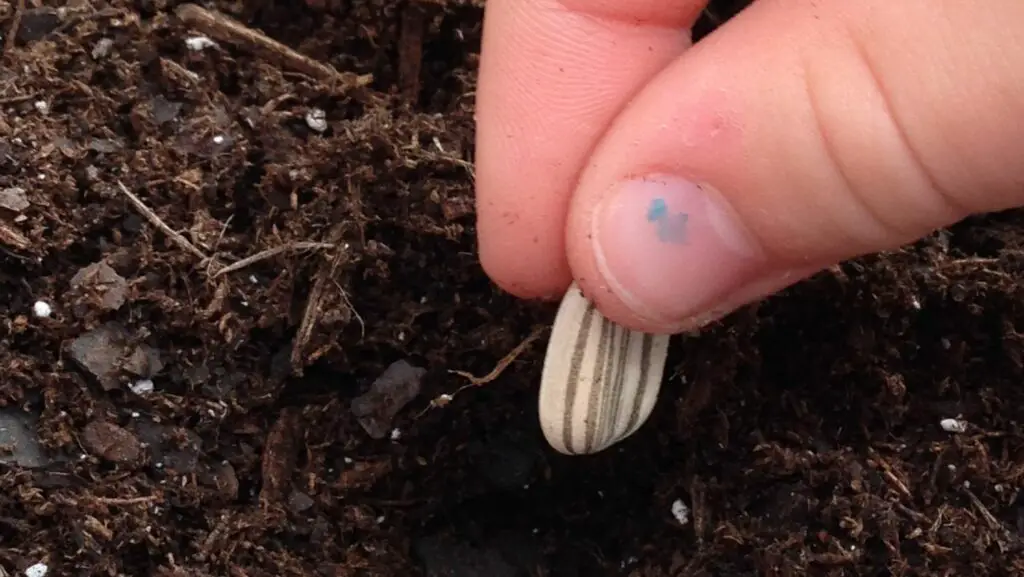
If you are about to plan your future garden, one of the first things you’ll need to consider is how many seeds you need to grow a plant. You should usually put two or three seeds per hole.
Yet, to fully answer this, you should look into how many people live in your house, how much space you have, and how many seeds you have.
As a gardener with 5+ years of experience, I must say that sometimes I still fall short in choosing how many seeds I need per plant. After all, you can never have too many carrots, right?
In this article, you’ll learn to understand how many seeds you need to grow a plant, why you should plant more seeds than needed, and the best way to choose how many seeds to sow.
How do I know how many seeds I need to plant?
You will need to keep in mind how many people live in your house and how many people will eventually eat the food you grow.
You should also consider how much space you have available and how willing you are to work on your garden.
Ideally, you’ll always plant more than what you think you need. If your family has four members, you could sow eight lettuce seeds; this way, you’ll end up with a surplus.
For example, when growing tomatoes, think of having two plants per person. If there are four individuals in your family, this means you’ll need eight tomato plants.
Also, on the backside of the seed’s packet, you’ll often find relevant information for the seeds to grow healthily.
Have a look and see if it says something about how many seeds you should sow per square foot.
For instance, a seed packet could say you should grow carrots 2 – 3 inches apart. If your bed is one foot, that means there are 12 inches. Therefore, you should plant 12 carrot seeds in that surface area.
When you are new at gardening, you could often doubt the new skills you are gaining. I’d always encourage you to plant extra seeds for all the plants you have.
Moreover, you should also ask yourself: ‘’what do we enjoy eating the most in this household?’’. If you love tomatoes the most, make sure your biggest crops are tomatoes!
On the contrary, if you barely eat celery, I’d still encourage you to grow some so you can gain some gardening knowledge from that experience. You can always gift it or barter it with a new gardener friend!
Also read : How long does it take for seeds to sprout in soil?
Why plant more seedlings than needed?
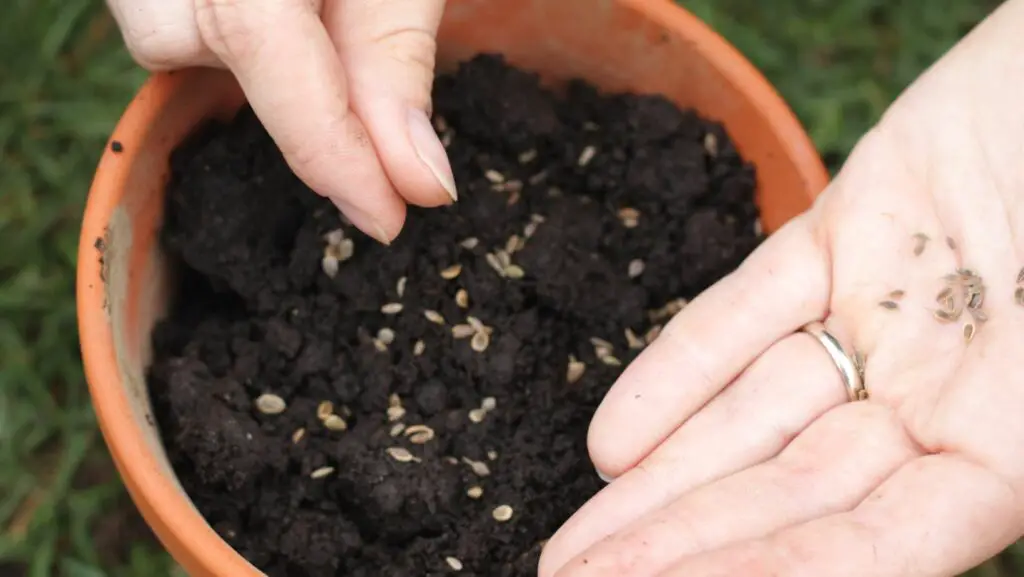
In every pot, cell or hole you should add an extra seed to increase your chances of success.
Understand what I mean by reading the reasons why it’s always recommended to plant more seedlings than needed:
Germination rate
Always consider the germination rate your seeds have. Hint: you usually find this information on your seed packet!
Whenever you see a germination rate, you will get valuable insight that will tell you the approximate percentage of seeds that could sprout. Thus, the germination rate you see on the packet will be out of 100 seeds.
For instance, an oregano seed packet could say ‘’germination rate: 65% out of 100’’. So, out of all the seeds inside the packet, only 65% of seeds are viable to germinate if all the growing conditions are met.
Therefore, the more seeds you plant, the higher the chance of germination. Lastly, the better your seeds are saved, the more chances they will have of becoming a plant (1). Having a seed bank could save your seeds!
Variety of seeds
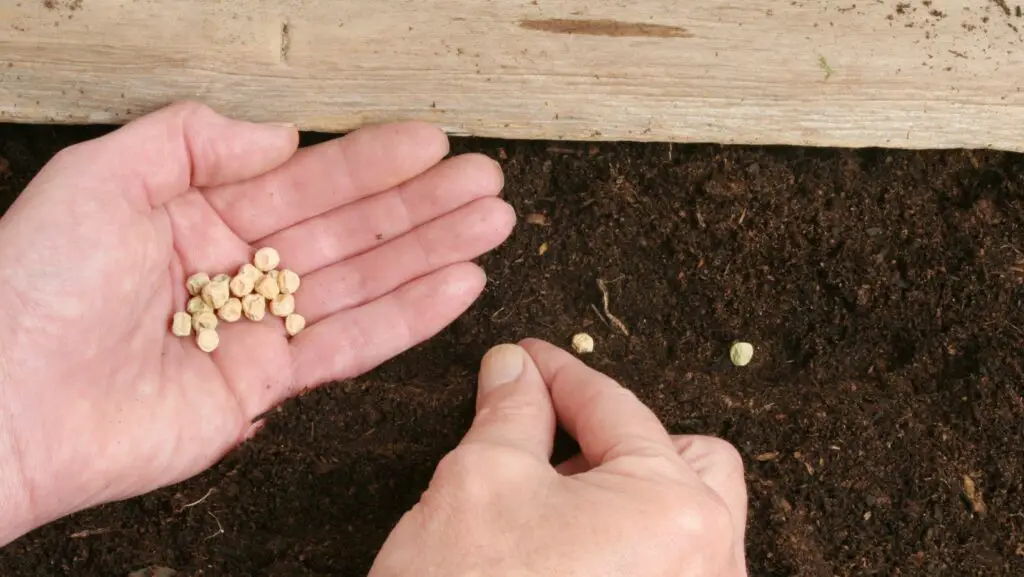
Would you like to grow rare crops that no one in your area has? You must focus on growing more seeds per plant!
This is the only way you’ll be able to incorporate a wide range of rare seeds into your garden because the more seeds you plant the more diverse your garden will be.
Not having enough sprouts
If you plant one seed per plant, you risk losing future harvests.
It is always advisable to do succession gardening instead of planting only one seed and forgetting about the rest of the seeds.
If you do so, you could have continuous harvests throughout the growing season. Therefore, the more seeds you plant, the more sprouts you have, and the more food you’ll eventually grow and harvest.
Succession garden
If you plant more seeds than needed, you could always start a garden where succession reigns. As a result, you will be in charge of how your garden produces food and how you’ll eventually harvest these crops.
For example, before the growing season begins I would often sow my pepper seeds on Monday during week ‘’A’’. But I don’t usually start all the seeds inside the packet this day.
The following Monday, which would be week ‘’B’’, I’d start more pepper seeds. During weeks ‘’C’’ and ‘’D’’ I wouldn’t start any seeds, but then during week ‘’E’’, I would start a double batch of pepper seeds.
During week ‘’F’’ I wouldn’t start seeds, then during weeks ‘’G and H’’ I would start two more batches.
Every gardener is different, but gardening this way has allowed me to have a continuous harvest throughout the season.
It has also allowed to intercrop my seedlings and create a succession garden with a wide range of crops.
Pests or diseases
Let’s say you are only growing five tomato plants, and have started all these plants simultaneously.
If a pest or disease attacks one of these plants, you can guarantee that the rest of the plants will also get damaged by the disease or the pests.
On the contrary, if you have ten tomato plants, you scatter them throughout the garden and do so successionally, you have a higher chance of growing healthy tomato plants.
Ideally, you want to avoid growing food for pests to enjoy. Sure, you can sacrifice one plant or two, but if you only have two plants of one particular crop, then you are losing all the investments you made in the first place.
What are the different types of seedlings I can plant?
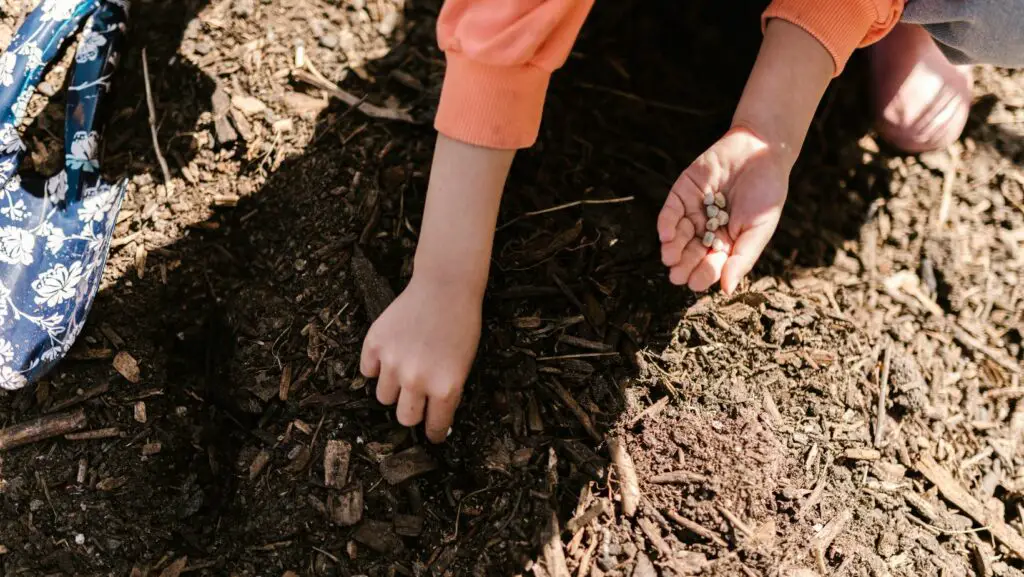
If this is your first time in the garden, I’d suggest you plant ‘the easier’ seeds, which tend to be the bigger seeds.
You can do so directly into the soil or you could put them in a pot, on a seed tray or container first. When the seed develops its first two or three true leaves, you could transplant it into the garden.
If you sow them directly, you will need to keep an eye on them by offering water constantly and making sure no rodents, ants (2), or any other pests get to them.
Some of these big seeds that are usually easier to grow could be:
- Cucumbers
- Watermelons
- Zucchini
- Squash
- Sunflowers
- Beans
- Groundnuts
- Corn
In any case, be sure to respect the germination process of your seeds and for each of them, put them in the optimal conditions of development, respecting their need for water and light (e.g. natural sunlight or if you work indoors, you can use grow lights).
FAQ
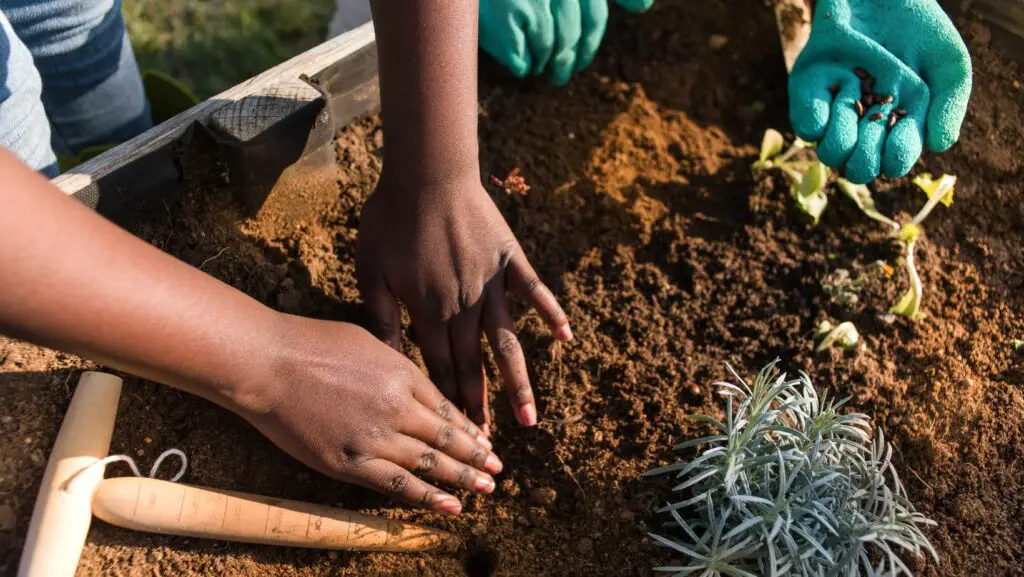
Find here a list of recurrent questions about seeds and their growth.
Are seeds hard to grow?
Seeds, and their relationship to the gardener, are all unique. Additionally, every gardener is different, and so are the soil, space and climate they grow in!
Thus, germination rates and their success will vary. All plants have different growing requirements. Some plants have adapted to certain climates, and others will surprise you with how challenging they could be.
Additionally, every gardener has a plant they love to grow from seed and one that cannot seem to be able to grow at all.
For me, my favorite vegetable to grow from seed is carrots. But I cannot seem to be able to grow radishes!
How long will the seed take to become a plant?
It depends on the type of plant you are growing. Larger seeds, such as corn or squash will usually take a longer time to sprout, grow, and develop fully.
Whereas smaller seeds, such as lettuce seeds, will take less time to sprout, grow, and develop fully.
All seeds, however, have different rates of seed dormancy (3). As a result, each seed will take a unique time to become a mature plant.
Is it better to grow from seed or cutting?
This will depend on the plant you are trying to grow. I’d suggest you grow all herbs from cuttings because growing this kind of plant from seed is really challenging, especially if this is your first time gardening.
For example, rosemary, lavender, and mint, to name a few, will grow in optimal conditions if you grow them from cuttings.
Conclusion
Garden seasons are always different. But keep these things in mind so your future gardener self will appreciate it:
- Have fun in the garden and experiment as much as you can. Plant two seeds per hole in one area and only plant one seed per hole in a different area. Compare the two and see how they did.
- Follow your intuition. Perhaps you don’t need to plant all the seeds inside the packet? Maybe you could also leave some seeds for future gardening seasons!
- Write down how many seeds you have sown and where. Being organized is essential!
When you are a beginner gardener, you will soon realize that gardening is all about the experiments you can make in the space you have available.
“How many carrot seeds per hole?” may be a question now, but as you experiment, it won’t be in the future.
References
- https://www.ncbi.nlm.nih.gov/pmc/articles/PMC9265770/
- https://www.ncbi.nlm.nih.gov/pmc/articles/PMC5125654/
- https://www.ncbi.nlm.nih.gov/pmc/articles/PMC9540907/

Hi!
I am the guy behind Theyardable.com. I grew up on a homestead and I am here to share the knowledge I have and things I learn while living in the countryside.
